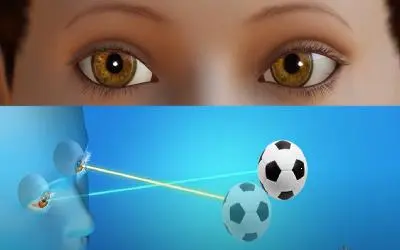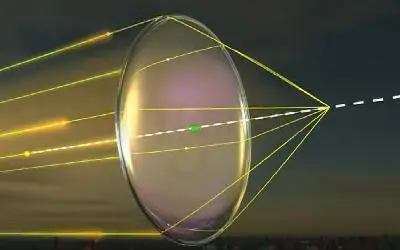If you haven’t had vision therapy before, it’s likely you haven’t come across syntonics.
Syntonics, a type of light therapy, usually marks the beginning of vision therapy for most patients! Also known as optometric phototherapy, syntonics involves transmitting light frequencies to the brain via the eyes. Dr. Ray Gottlieb and Dr. Larry Wallace state in the Journal of Behavioral Optometry, “Energy medicine, which also includes different forms of light therapy, is rapidly becoming a global phenomenon used by a variety of health professionals from medical physicians to chiropractors, acupuncturists, physical therapists, and psychologists. In our view, there lies the future of medicine,” (Syntonic Photherapy, 31).
In an initial session, patients typically stare into different light frequencies based on their specific visual issues. Syntonics has proven effective in treating various visual problems such as eye turns, lazy eyes, focusing, vergence issues, and even emotional disorders and brain injuries! It’s most effective for those dealing with headaches, head injuries, or multiple visual issues simultaneously. Beyond addressing specific problems, syntonics expands the visual field, not just in terms of what we see in our peripheral vision but also in the amount of information our brain processes. People with a functional visual field issue might physically see their surroundings, but their brain essentially ignores it. I had a patient with migraines and double vision; after just one week of syntonics, her headaches reduced, and she remarked, “I’ve never noticed all the buildings I pass on my drive to work until now!” For her and many others, syntonics is a viable alternative when medication doesn’t help.
Apart from altering the interaction between your brain and eyes, syntonics also balances your sympathetic and parasympathetic nervous systems. Dr. H.R. Spitler coined the term syntonics in the early 1900s, meaning “to bring into balance.” Spitler published The Syntonic Principle in 1933, showcasing clinical outcomes from practitioners and demonstrating a positive response in 90.7% of individuals who underwent the treatments. We’ve been using this scientific field clinically for over 70 years now! (Syntonic Phototherapy, 31).
So, what’s involved? During an initial consultation, the optometrist examines the patient’s pupils. They shine a pen light into their eye and observe how quickly the pupil returns to normal or dilates, termed pupillary release. If the pupil doesn’t constrict and remain small for at least ten seconds, it’s often a sign of a reduced functional visual field or nervous system imbalance. (Syntonic Phototherapy, 31). The doctor then prescribes specific colors of light based on these results, along with the patient’s history and symptoms. Typically, those starting vision therapy will do syntonics for a minimum of three weeks, at least six days a week. They attend a weekly in-office session where they sit in a darkened room and gaze into a unit emitting two different light frequencies, each for 10 minutes. At home, they either use their light unit or wear glasses in a bright room or outside on a sunny day. After the 10 minutes, they shut their eyes and describe what they see, usually a mix of various colors. This feedback, along with weekly visual field tests, indicates how much information they absorb from their peripheral vision and how effective the syntonics is for them. Behavior changes and symptom reduction also serve as indicators.
For further insights into syntonics, access the scientific article referenced earlier.
-Emily Thompson, Vision Therapist



